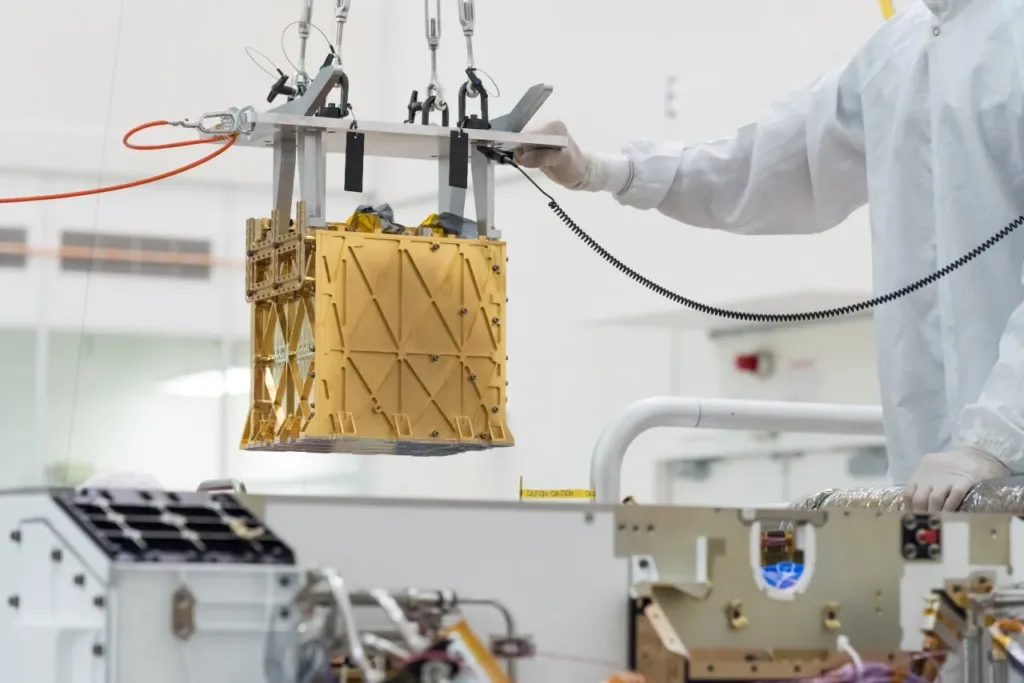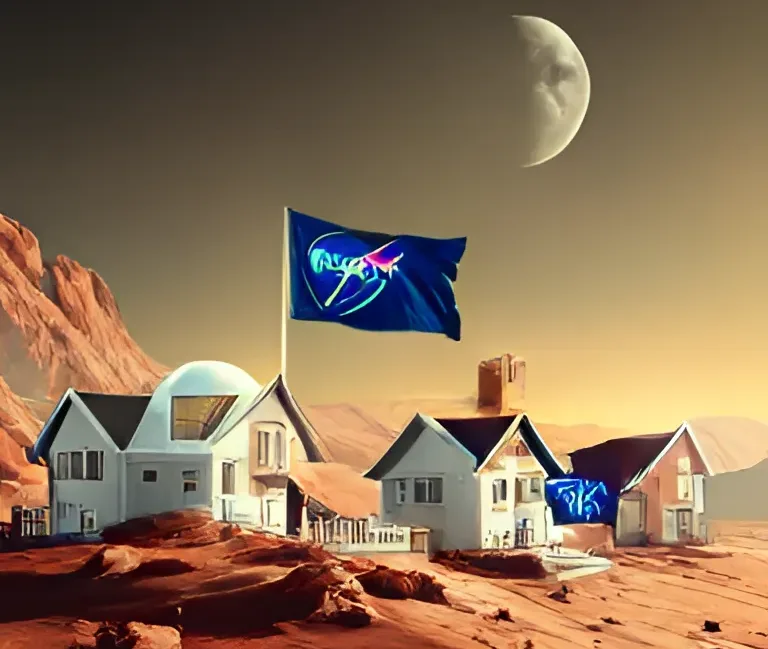Story Covered in the Article
- Trump’s Ambitious Mars Goal – President Donald Trump wants the U.S. to land astronauts on Mars by 2029, but experts questions
- NASA and SpaceX Face Major Obstacles – NASA is still working to return humans to the Moon, and SpaceX’s Starship, the key vehicle for Mars travel, multiple test failures.
- Critical Challenges in Deep-Space Travel – Key hurdles include spacecraft mass limitations, radiation exposure, microgravity health effects, fuel production on Mars, and life-support systems for long-duration missions.
- Funding and International Collaboration Issues – A Mars mission will require massive funding and advanced technology, but securing financial support and international cooperation remains uncertain.
A report by German aerospace engineers questions whether SpaceX’s Starship can realistically take humans to Mars by 2029, raising doubts about NASA timeline for deep-space exploration.
President Donald Trump has announced that the United States will work to land astronauts on Mars within the next four years. His ambitious goal aligns with the end of his potential presidential term. However, experts question whether this timeline is realistic.
NASA is still struggling to return humans to the Moon. The Artemis 2 mission has faced multiple delays. Moving from this stage to putting astronauts on Mars by 2029 seems highly challenging.
“A Mars mission will be the greatest undertaking humans have ever attempted,” said Volker Maiwald, an aerospace engineer at the German Aerospace Center (DLR), in an interview with Space.com.
Trump has not shared specific details about his Mars plan. However, SpaceX will likely play a key role. The company, founded by Elon Musk, has been a major force in space innovation. Musk, a strong Trump supporter, has become one of his closest advisors on space policy.
Can SpaceX Deliver?
SpaceX plans to use its Starship rocket for the Mars mission. However, Starship is still in development. The rocket completed its seventh test flight on Jan. 16. The mission had mixed results. The Super Heavy booster successfully landed, but the upper stage exploded due to a propellant leak.
SpaceX has much work to do before astronauts can fly. Musk has set ambitious targets, planning uncrewed Mars missions in 2026. If those succeed, a crewed mission could follow in 2028. Yet experts remain skeptical.
Challenges in Getting to Mars by 2029
Maiwald and his team recently published a study in Scientific Reports questioning the feasibility of a Mars mission aboard Starship. The main problem is mass. A crewed Mars mission needs astronauts, supplies, fuel, and life-support systems. Starship may not be able to carry all that in one trip.
NASA and SpaceX must also solve the issue of consumables. Astronauts need food, water, and air for survival. Recycling these resources is crucial. Plants can help, but even a perfect recycling system may not be enough.
“A 100% recovery rate is theoretically impossible,” said Maiwald. Even the best systems lose some resources over time.
Fueling the Return Journey
Fuel is another major challenge. Carrying enough fuel for the round trip is impractical. Instead, astronauts would need to produce fuel on Mars. This process, called in-situ resource utilization (ISRU), remains untested on a large scale.
NASA’s Perseverance rover tested ISRU with the MOXIE experiment in 2021. MOXIE successfully extracted oxygen from Mars’ atmosphere. However, it only produced 122 grams of oxygen before shutting down in 2023. NASA estimates that launching just four astronauts from Mars would require 55,000 pounds of oxygen. Clearly, a more efficient system is necessary.

Technicians at NASA’s Jet Propulsion Laboratory lower the Mars Oxygen In-Situ Resource Utilization Experiment (MOXIE) instrument into the belly of the Perseverance rover. Credits: NASA/JPL-Caltech
Creating methane fuel from Martian ice is another hurdle. “There is no technology ready for this in a Mars-like environment,” Maiwald noted.
Additionally, any fuel production would need to occur before astronauts arrive. Robots would have to operate independently and reliably. If the system fails, astronauts could be stranded.
The Threat of Space Radiation
Radiation exposure is a serious concern for long-term space missions. Astronauts traveling to Mars would experience radiation doses 700 times higher than on Earth. Even on the Martian surface, they would remain exposed. Mars lacks a strong atmosphere and magnetic field to shield against cosmic rays.
Shielding solutions are still in development. NASA is testing materials, but nothing is ready for a Mars mission.
Microgravity and Health Risks
Microgravity also affects human health. Astronauts experience muscle atrophy and vision problems in space. Studies show that extended stays in microgravity can lead to spaceflight-associated neuro-ocular syndrome (SANS). At least 70% of astronauts on the International Space Station (ISS) have shown symptoms. While most recover after returning to Earth, the effects of a longer Mars mission remain unknown.
NASA is working on countermeasures, but no perfect solution exists yet.
Protecting Mars from Contamination
Another issue is planetary protection. COSPAR (Committee on Space Research) has strict sterilization rules for robotic missions. These rules aim to prevent Earth microbes from contaminating Mars. Astronauts, however, cannot be sterilized like robots. NASA must develop protocols to minimize contamination risks. Otherwise, future scientific discoveries on Mars could be compromised.
Are We Ready for Mars by 2029?
Maiwald and his team suggest several steps to increase the chances of success. First, NASA and SpaceX should conduct uncrewed Mars missions to test technology. Second, multiple Starships should deliver supplies before astronauts arrive. Third, advanced life-support systems must be developed to maximize resource recycling. Finally, international collaboration could provide funding and expertise. However, politics may complicate cooperation.
Despite Trump’s ambitious vision, experts doubt that humans will reach Mars by 2029. “The technology development effort is immense and time-consuming,” Maiwald said. “I would be happy if it happens in my lifetime.”
NASA and SpaceX continue to push forward, but major challenges remain. While Mars by 2029 is an exciting goal, it may not be a realistic one.
The Cost of a Crewed Mars Mission
Funding remains a crucial barrier to a Mars mission. NASA’s annual budget is limited, and developing the necessary technology requires significant investment. SpaceX, while financially successful, still relies on government contracts and private investments to fund Starship development.
A Mars mission would cost hundreds of billions of dollars. Congress would need to approve significant funding, which could be challenging in a divided political climate. While Trump may advocate for Mars by 2029, securing the necessary financial support is another matter entirely.
The Need for Long-Term Space Habitats
Astronauts will need shelter on Mars. NASA and SpaceX must develop durable, radiation-resistant habitats. The Martian atmosphere is thin, and temperatures can drop to -80 degrees Fahrenheit (-62 degrees Celsius). Protecting astronauts from these harsh conditions is a major challenge.
NASA is testing inflatable habitats and 3D-printed structures made from Martian regolith. However, these technologies remain in early stages. Establishing a functional base on Mars by 2029 would require rapid development and testing.
Psychological and Social Challenges
Living on Mars for months or years poses psychological challenges. Astronauts would face isolation, communication delays, and extreme conditions. The mental strain of a Mars mission could impact performance and decision-making.
NASA studies astronaut psychology on the ISS. Long-duration missions reveal the need for strong support systems, team cohesion, and mental health resources. Addressing these challenges is essential for a successful Mars mission.
The Role of International Partnerships
Mars exploration may require global collaboration. NASA has partnered with space agencies like ESA, Roscosmos, and JAXA for previous missions. International cooperation could provide additional funding, technology, and expertise.
However, geopolitical tensions could impact collaboration. SpaceX prefers a private-sector approach, while NASA relies on government funding. Balancing these interests will be critical in reaching Mars by 2029.
Final Thoughts: Will Mars by 2029 Happen?
The goal of landing astronauts on Mars by 2029 is ambitious. NASA and SpaceX face significant technical, financial, and logistical challenges. While progress is being made, experts doubt that all obstacles can be overcome in time.
Trump’s push for Mars exploration has reignited interest in deep-space travel. Whether his vision becomes reality depends on continued investment, technological breakthroughs, and political will. For now, Mars by 2029 remains an uncertain but exciting possibility.


